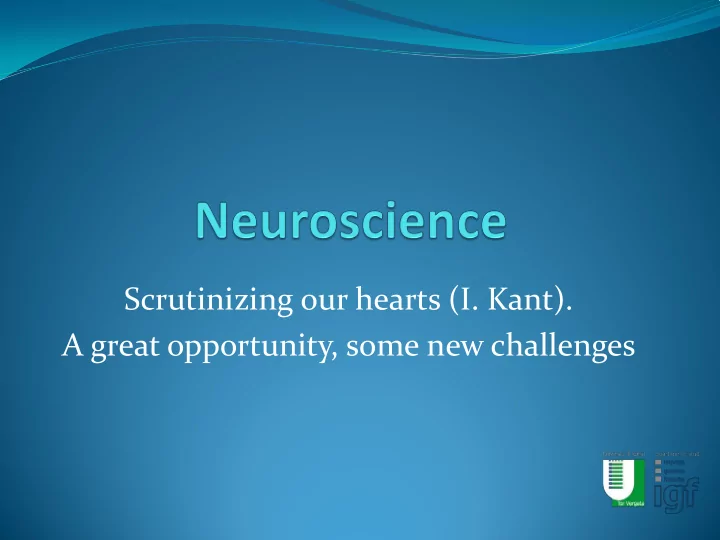

Scrutinizing our hearts (I. Kant). A great opportunity, some new challenges
Why is the IBC addressing this topic? The IBC included a reflection on the Principle of non- discrimination and non-stigmatization, as set forth in Article 11 of the Universal Declaration on Bioethics and Human Rights (2005), in its 2012-2013 work program (Baku, June 2011). Six illustrative examples were pointed out. Three of them (tropical neglected diseases, Hiv/Aids, and organ transplantation) are immediately related to the persisting challenges of poverty and social/cultural faults of inequality. Three of them (biobanks, nanotechnology, and neuroscience) correspond to emerging scientific and technological developments that could aggravate persisting problems or even create new versions of these problems.
A preliminary clarification: are economic inequalities a possible source of discrimination? The concept of discrimination entails the idea of a different treatment based on differences that should not be relevant, either in general or to some specific issue. Therefore, it depends on what we are talking about: «The lottery of social and biological life should not be grounds for disadvantages or advantages. Examples of characteristics that should not be grounds for special disqualifications, harms and restrictions are sex, race, religion, political belief, national origin or sexual orientation. In the case of health care and building on the awareness that material conditions of human life are pervasive factors in its improvement, Article 14 of the Universal Declaration of 2005 includes economic conditions as a potential basis for discrimination not to be tolerated».
Some dark sides of neuroscience Evil as ‘nature’ (the discriminating twist of the species) Evil or fragility as someone’s fate (the stigma on the individual) Enhancement as a commodity
Evil as ‘nature’ Neuroscience studies have revealed a "same-face advantage" when small groups of black and white subjects were exposed to pictures of unfamiliar black and white faces. Both black and white subjects were better at recognizing same-race faces, though the effect was significant only for the white subjects. These results were correlated with activation of a part of the brain called the fusiform gyrus. What proportion of these (and others) behavioral findings is genetically or ontologically determined and what is the importance of culture and education for the personality of each individual?
Evil or fragility as someone’s fate Neuroimaging has been used in legal cases to assist in retrospective arguments about the defects that might have helped lead an individual to engage in a violent crime. And science fiction already anticipates the other direction of the game: see Minority Report… If such a prospective screening were ever a matter of policy there should be obviously high risks of stigmatization (with the aggravating circumstance of the uncertain “diagnostic” value of this information).
Enhancement as a commodity It is not just about the legitimacy of enhancement as such, which is already a very controversial issue. It is about John Rawls’s second principle of justice: social and economic inequalities are to be attached to offices and positions open to all under conditions of fair equality of opportunity. Should enhancement be something to distribute «under conditions of fair equality»?
Recommend
More recommend